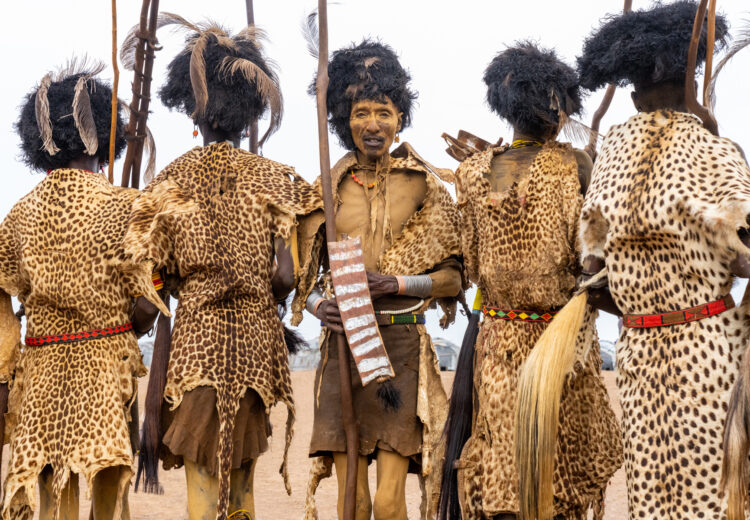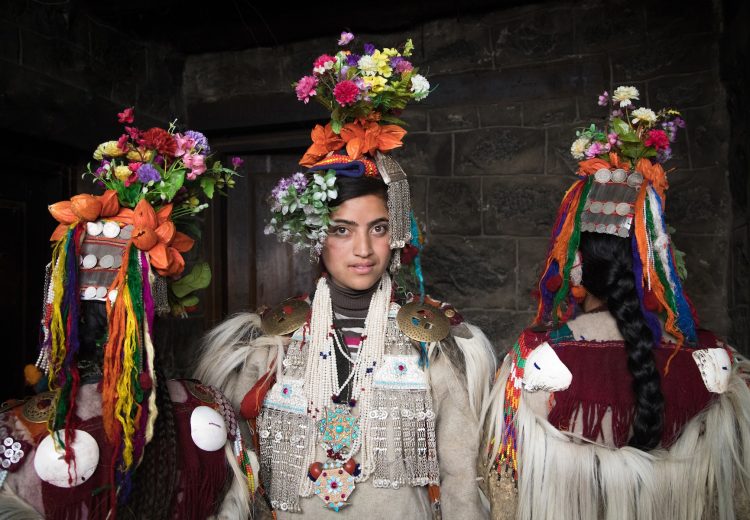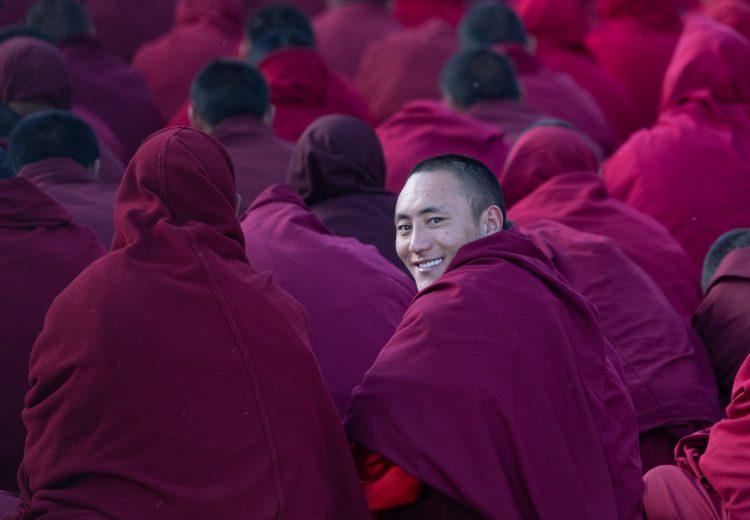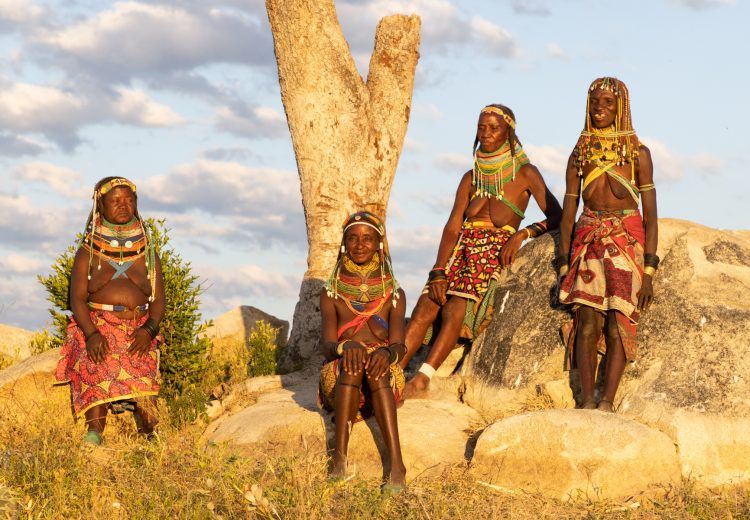Mongolia
MONGOLIA’S FORGOTTEN REINDEER HERDERS: The Tsaatan Nomads of Hovsgol









A young Tsaatan or Dukha reindeer herder boy with his reindeer in the fields of northern Mongolia (Stock image)

A young Tsaatan girl in her reindeer herd (Image by stock)

A young Tsaatan boy sitting on a stool of reindeer antlers (Image by stock)

Portrait of a Tsaatan hunter in northern Mongolia. The reindeer herders only use their reindeer for milk. Meat is hunted (Stock image)

The Tsaatan treat their reindeer as family and only use them for milk products. Meat is hunted. (Image by stock)

A reindeer stag takes a rest under a rainbow in northern Mongolia (Stock image)

An elderly Tsaatan man rides his reindeer out of his camp in northern Mongolia (Stock image)
MONGOLIA’S FORGOTTEN REINDEER HERDERS PHOTOGRAPHY TOURS WITH WILD IMAGES
For thousands of years, the Tsaatan people, also known as the Dukha, have lived in the remote, deep forests and tundras of northern Mongolia. Numbering only around 300 people they are considered to be one of the smallest ethnic minorities in the world.
Moving from pasture to pasture every seven to ten weeks, this tiny community of nomadic reindeer herders is one of the few remaining tribes of its kind.
Natives of Russian Siberia and Mongolia’s northernmost province of Khovsgol, Dukha herders depend on their reindeer for nearly all aspects of survival, as well as cultural and spiritual identity.
But as modern development makes its way into their remote habitat, their ancient traditions are now at risk of dying out. The introduction of a conservation area (which has restricted the Dukha from traditional hunting) in 2012, illegal mining and climate change has all added pressure on these special people, forcing many of them to move to towns and abandon their traditional nomadic lifestyle with their reindeer herds.
This tour will take you to the heart of the Taiga forest in northern Mongolia where we will camp alongside a family of traditional Dukha people for several days, learning about how they keep their reindeer and survive the harsh winters in this spectacular region of northern Mongolia.
After leaving the remote town of Murun, we will drive to the trail head of Darkhad Valley in 4WD vehicles. Along the way we will see some of the most pristine landscapes in the world, gaze upon spectacular views, see stunning wild horses, yaks, and golden eagles, meet incredible local people who will welcome you into their home with open arms and talk to us about the joys and hardships of nomadic life in Mongolia.
From there we will trek out to a family of herders living in a wild region of forest called Tengis Shishegt, near the border between Mongolia and Russia. Reindeer outdo horses in this wild terrain and they have allowed the Dukha to evade many of the upheavals that have historically afflicted people in the lowlands, from Genghis Khan to Communism.
The last remaining Dukha are spread out across 59 households in this area and to visit them is to witness something magical. A relationship between humans and animals that has stood the test of time, and a culture that has a deep respect for the earth and all of its gifts.
Originally from the Russian region of Tuva, the Tsaatan people live on the border of Mongolia and Russia in an area called the taiga. The taiga, in lamens terms, is a snow forest (in winter) or swamp forest (in summer) that forms a border between the arctic tundra and the grasslands.
You can find taiga in any of the world’s northern-most countries including Russia, Mongolia, the Nordic countries in Europe, Canada and the US (Alaska). The taiga is actually the world’s second largest biome (apart from the ocean), which is crazy considering I had never even heard of it before my trip to Mongolia.
While the taiga may seem like a cold and unforgiving environment to you, it’s the perfect place for the reindeer that the Dukha have grown to love and care for like family. And where their reindeer thrive, they thrive.
The Dukha and their reindeer have an incredible symbiotic relationship, each dependent on the other for survival. Without the reindeer, the Dukha could never survive in the taiga, and without the Dukha, the reindeer would die off at the paws of wolves.
The Dukha use their reindeer for dairy products (including milk, yoghurt and cheese) and transportation while the reindeer use the Dukha for safety and protection from predators. This symbiotic relationship necessitates that the Dukha live as nomads, moving with their reindeer as they graze on a very specific kind of arctic moss.
The taiga extends from Mongolia into Russia, and, in the past, the Dukha used to migrate freely between the two countries. However, Russia’s involvement in World War II ended that lifestyle. Consequently food shortages and the fear of having their reindeer claimed by the government forced the Dukha people to move permanently into Mongolia.
While the Dukha have lived exclusively in Mongolia for almost 70 years now, they still speak their native language of Tuvan, making communication difficult for visitors without skilled translators. Very few of them even speak Mongolian.
Life For the Dukha
The Dukha people live almost completely off the land, sleeping in teepees that are made from long skinny tree trunks around which a waterproof canvas covering is stretched. Beds are made from logs, warmth comes from a wood-fired stove and their sustenance comes entirely from their reindeer. The Dukha consider their reindeer as part of the family, so they rarely eat reindeer for meat.
Every few weeks a family will send one of their members into town to buy supplies and food that can’t be sourced at camp. Typical purchases would be flour, rice, vegetables, or clothes.
A typical day for Dukha people includes waking up, lighting the stove and then heading out to milk their reindeer. After milking the families gather in their teepees and make milk tea and breakfast on the stove. Following breakfast, the families let their reindeer loose and a few people work together to herd them away from camp to their grazing area where they are free to graze all day.
During the day families hang out together drinking tea and tending to different household tasks such as making yoghurt, cheese, and bread, hunting for meat, or gathering berries from the woods (in the summer).
In the evening Dukha families go out to get the reindeer from their grazing area and herd them back to camp where they are tethered for the night. After dinner they will do a final night check of the reindeer before going to bed.
The Dukha typically move camp up to seven to eight times a year on migration. This massive task involves packing all of their belongings (teepees, stoves, pots, utensils, clothes, etc.) on the backs of their reindeer so they can move to more favourable grazing grounds for their reindeer.
The culture of Shamanism in the Dukha Reindeer Herders
Shamanism, one of the oldest religious beliefs in the world, is still widely practiced by the Dukha reindeer herders in Mongolia. Essentially it is the vehicle behind the close relationship Mongolian people share between nature and Tengrism (sky worship). Tengrists believe the sky, earth, nature and the spirits of their ancestors guard and bless all people. The Shamanistic practices among the Dukha are thought to be the oldest in the country. Not only do they worship their Shaman, but they have many mystical holy books as well, and use many different treatises in their daily lives, including those for hunting and for calling or banishing the rain.
We hope to meet a Dukha shaman on our tour to meet the reindeer herders of Mongolia.
Uushig Deer Stones
Located on the south-eastern side of rocky Mount Uushig 17km west from Murun, the Uushig Deer Stone area is home to several square burials and 14 deer stones in a single area depicting different figures that date back to the Bronze Age. The deer stones of Uushig are said to be the most clearly depicted deer stones in Mongolia. The deer stones are aligned from north to south in a single column. Each stone is between three and twenty metres distant from each other and is made of tetrahedral granite. A deer, an arch, a shield, a horse, a knife, the moon, the sun and a mirror figured belt are all depicted on the stones. A total of 109 deer figures as well as some human figures are carved on 14 different stones at Uushig and visiting them on our Mongolia reindeer herder photography tour will give us a snapshot in to the ancient ways of these special people.
In 2024 this tour can be taken together with: EAGLE HUNTERS OF WESTERN MONGOLIA
Accommodation & Road Transport
Road transport is by 4WD Toyota Landcruisers.
Our fully supported camps includes two man tents, stretcher beds with mattresses and bedding. Shared shower and toilet tents will be provided and erected by camp crew. Delicious meals will be supplied by camp cooks.
With the exception of the supported camps around the Dukha people, accommodation is in comfortable lodges, hotels and guest houses.
Walking
This is a strenuous walking trip which involves hiking in sometimes muddy and boggy conditions. Pack horses will be provided to carry luggage and our camp to the nomad camps
Climate
The Hovsgol region lies very close to the border between Mongolia and Russia and we can expect days to warm to temperatures between 12C and 20C. During the nights the temperatures may drop to below zero.
Photographic Equipment
For most photography of the people in Mongolia, a travel lens of around 24-105mm on a full frame DSLR or mirrorless body will be essential. A wide angle lens of around 16mm or smaller will be perfect for working with the people inside gers or yurts.
If you prefer to photograph people from a distance, then please consider bringing a larger zoom or telephoto lens. It is our experience that sometimes people can feel a bit intimidated by large cameras and lenses so you may wish to bring a smaller sized zoom lens like a 100-400mm which doesn’t appear as intimidating as a large fixed focal length telephoto lens. Such a lens can also be useful for any wildlife we encounter.
If you bring a good quality bridge camera instead of a DSLR or mirrorless it will be best if it has an optical zoom of 18-20x or more, combined with a reasonable wide-angle at the other end of the zoom range.
If you have a phone or tablet that can be used for photography, you may find these quite useful around people.
Similarly if you have a Polaroid camera like the Leica Sofort or an Instax Mini, these are wonderful to have on hand when you spend time with tribal people. If you decide to bring one of these, please bring lots of film with you as the photographs you produce will be quite popular!
Be sure to bring plenty of spare battery power. On a number of nights there will be no access to power.
Drones are also a wonderful addition to your photography kit on our Mongolia photo tours, however, if you plan to bring your drone with you please contact our office to chat with our leader about drone photography in Mongolia.
If you would like to talk over suitable equipment, please contact our office. We will be happy to advise.
Photographic Highlights
- Trek into the spectacular Tsagaan Nuur region on the western shores of Lake Hovsgol to meet some of the last remaining 300 reindeer herders called Tsaatan or Dukha, living deep in the montane Taiga forest and tundra
- Join photographer Inger Vandyke to meet these nomadic people and engage with them for photographic portraits
- A true, partly on foot adventure with pack horses in the wildest regions of northern Mongolia
- A local guide who are knowledgeable about the natural and human history of northern Mongolia
- Excursions in reindeer herder camps at sunrise and sunset to enjoy the best light of day for photography
- A chance to spot other Taiga forest wildlife including Brown Bear, Grey Wolf, Wolverine and Elk (Moose)
- An adventurous drive north from Ulaanbaatar with photography stops for scenery, wildlife and people
- Meet a visiting Tsaatan shaman and learn about the most traditional form of shamanism in Mongolia
- Explore the ancient Deer Stones of Uushig
OUTLINE ITINERARY
- Day 1: Morning tour start at Ulaanbaatar airport. Sightseeing and photography in the city.
- Day 2: Drive to Murun, with photo stops en route.
- Day 3: Drive to remote Tsagaan Nuur, with photo stops en route.
- Day 4: Drive a short distance to the Darkhad valley and walk to the Tsataan reindeer herders' camp.
- Days 5-7: With the Tsataan reindeer herders.
- Day 8: Last morning with the herders, then return to Tsagaan Nuur.
- Day 9: Return to Murun, with stops en route.
- Day 10: Return to Ulaanbaatar with stops en route.
- Day 11: Morning tour end at Ulaanbaatar airport.
To see a larger map, click on the square-like ‘enlarge’ icon in the upper right of the map box.
To see (or hide) the ‘map legend’, click on the icon with an arrow in the upper left of the map box.
To change to a satellite view, which is great for seeing the physical terrain (and for seeing really fine details by repetitive use of the + button), click on the square ‘map view’ icon in the lower left corner of the ‘map legend’.
PRICE INFORMATION
Wild Images Inclusions: Our tour prices include surface transportation, accommodations, meals and entrance fees.
Our tour prices also include all tips for local guides, drivers, camp staff and accommodation/restaurant staff. We also include payments to local people who are willing to be photographed.
Deposit: 20% of the total tour price. Our office will let you know what deposit amount is due, in order to confirm your booking, following receipt of your online booking form.
TO BOOK THIS TOUR: Click here (you will need the tour dates)
If you are travelling alone, the single supplement will not apply if you are willing to share a room and there is a room-mate of the same sex available.
The single supplement relates to the nights in Ulaanbaatar.
This tour is priced in US Dollars. Amounts shown in other currencies are indicative.
Air Travel To & From The Tour: Our in-house IATA ticket agency will be pleased to arrange your air travel on request, or you may arrange this yourself if you prefer.
MONGOLIA’S FORGOTTEN REINDEER HERDERS PHOTOGRAPHY TOUR: DETAILED ITINERARY
Day 1: Our Mongolia reindeer herder photography tour will begin this morning at Ulaanbaatar’s Chinggis Khan Airport. Transfers to the hotel will be provided and subsequently we will enjoy an excursion to the Gandan monastery, Sukhbaatar Square and Zaisan Hill before returning to our hotel for a welcome dinner. Overnight: Bayangol Hotel.
Day 2: After an early breakfast we will begin our journey north in 4WD vehicles towards the city of Murun for an overnight stay at an hotel. During this full day journey we will stop for photo breaks and to stretch our legs.
Day 3: Today we will take the last road leg of our journey to the remote settlement of Tsagaan Nuur, the last access point to the eastern stretch of the Taiga that is home to the Tsataan or Dukha reindeer herders of northern Mongolia. We will overnight at a simple guesthouse.
Day 4: Arriving at the Darkhad Valley early this morning, we will prepare for our trek north with pony handlers. We will pack up our gear and load a group of sturdy Mongolian ponies before we begin our trek north towards the forests where the Tsataan (or Dukha) nomads live with their reindeer. When we have located a family to stay with, we will set up camp nearby
Days 5-7: Using our camp as a base, we will live alongside the Tsataan reindeer herders, learning how they milk their reindeer and make butter and yoghurt. We will learn how these nomadic people have not only learned how to live in the coldest region of Mongolia, but how some of them cannot bear to live inside. It was once said that a group of Tsataan children were sent to attend school but they could not bear sitting in a classroom so they learned by sitting outside the window of the schoolroom and listening.
Day 8: On our last morning with the Tsataan reindeer herders we will pack up our camp and trek out of the forest, leaving enough time to drive back to Tsagaan Nuur for an overnight at our guesthouse.
Day 9: Leaving Tsagaan Nuur, we will drive back to the town of Murun, the provincial centre of Hovsgol, making various photography stops, including one to view the ancient Deer Stones at Uushig. These monoliths are believed to date back to the Bronze Age. We will overnight at an hotel at Murun.
Day 10: On the last full day of our tour we will have a full day’s drive back to Ulaanbaatar, broken only by some short stops for photography.
Day 11: Our our Mongolia’s Forgotten Reindeer Herders photography tour will end this morning with our departure from Ulaanbaatar airport.
Other Wild Images Tours for People Photography
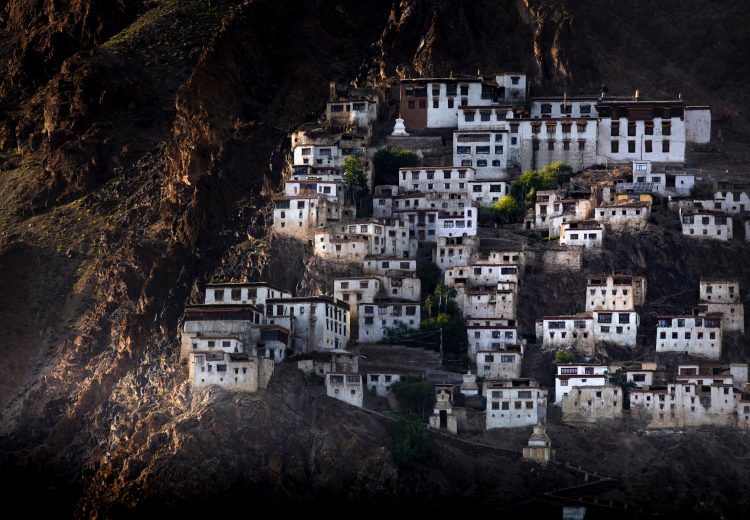
India
September-October 2025
ZANSKAR: A REMOTE BUDDHIST WORLD – Exploring the most isolated valley of the Indian Himalayas
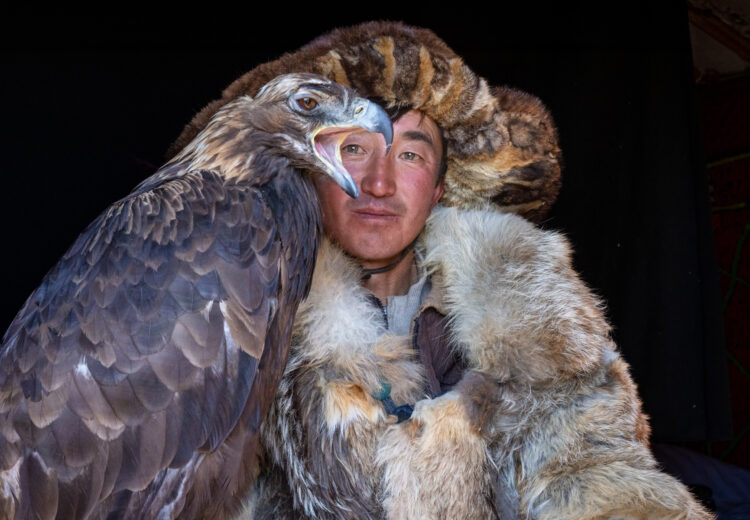
Mongolia
September 2026










